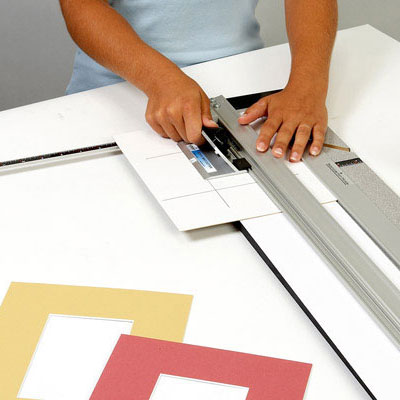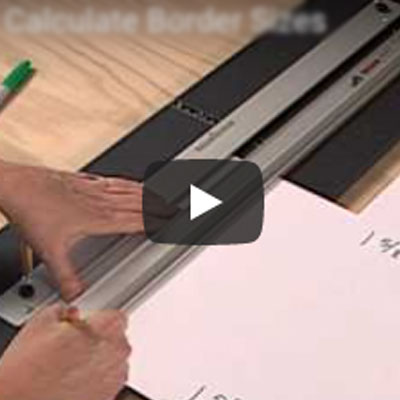Building a picture frame consists of five steps: sawing, sanding, gluing, clamping and nailing. The proper sequence is evident. But the time taken at each step may not be, which is one of the reason novice framers struggle to get perfect corner joints.
Corner joints are formed when the mitered ends of two frame sections are brought together to form a 90-degree corner. The 45-degree miter faces are pressed together resulting in a thin and, one hopes, inconspicuous seam. If there is any discrepancy in the miters, however, an unsightly gap will occur.
Fast versus Slow
To get perfect corner joints each miter cut must be virtually flawless. But sawing is not something you want to toil over. In fact, the quicker your saw the better. Power miter saws are not only faster than manual saws, they are more precise as their blades cannot flex and torque like manual saw blades can. To achieve perfect joints more consistently opt for a power miter saw over a manual saw.
Even with power saws, however, you may need to sand. Sanding miters to correct discrepancies is a common part of the frame building process.
Here, however, speed is your enemy. Power sanders move too fast, taking off too much of the miter too quickly, causing you to overshoot your mark. When it comes to sanders you prefer a nice, slow hand-operated rotary sander like the Logan Precision Sander.
But how do you know if you miters need sanding?
The Importance of Strapping
The only way to know with any certainty is to assemble the frame. But once you've driven the nails into the frame to assemble it, you cannot get them out. So what's called for here is a way to assemble the frame without driving nails into it. A strap clamp serves this purpose.
A strap clamp encircles the frame, drawing its mitered corners together as it is cinched around it, allowing you to inspect the joints. If there are discrepancies, the frame can be released from the clamp and sanded.
Holding it Together When Frame Making
Even with the miters sanded perfectly, however, gaps may appear at the joint when the frame is nailed. The act of nailing can cause gaps to appear if not performed accurately. Over-clamping, misaligning the nail or moving the frame when nailing can all result in a gap at the seam. To avoid this, glue the frame first, and then let it dry.
Picture frames are typically held together with a combination of wood glue and nails. Both contribute about equal amounts to the bond. One of the most common mistakes novice framers make is to nail the frame before the glue has been allowed to dry, on the assumption that the nail is the primary bonding agent and the glue only there to reinforce it.
If the glue is not dry, the joints are vulnerable to all the inaccuracies that can occur during nailing. On the other, if the frame is glued and left to dry in a strap clamp before nailing, then the act of nailing cannot open a gap at the seam.
Sure, it takes longer to join the frame this way, but gluing and nailing is a part of the process where going slowly and taking your time can pay big dividends when it comes to getting perfect corner joints.
Quick to saw, but slow and steady when it comes to sanding, gluing and nailing. These are good things to remember when building a picture frame.
The sequence is evident, but the time taken with each step can be the difference between a poorly assembled frame and one with tight seams and perfect corner joints.












